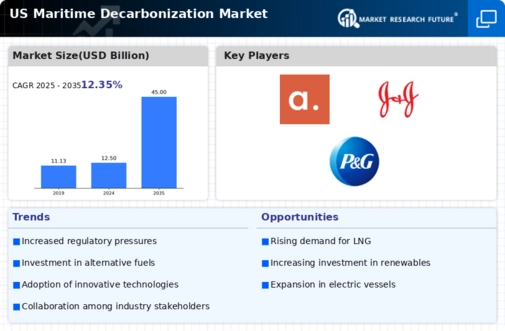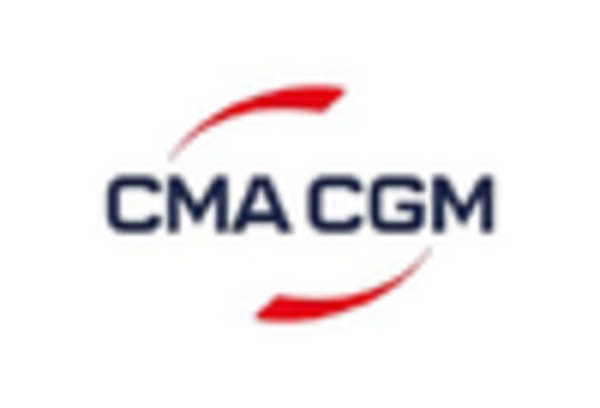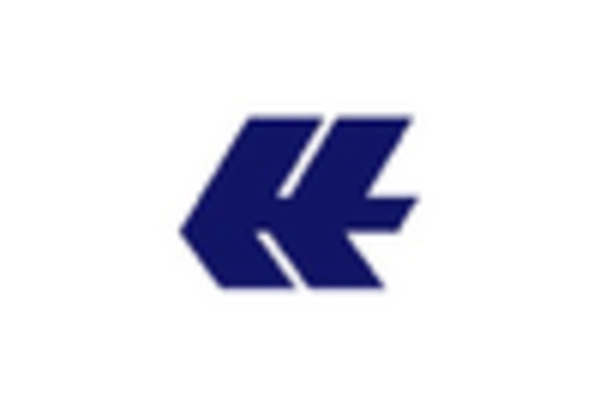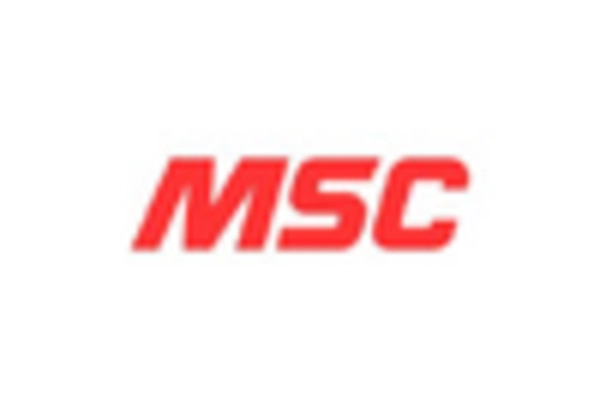Increasing Environmental Regulations
The maritime decarbonization market is experiencing a surge in demand due to the increasing stringency of environmental regulations. Regulatory bodies in the US are implementing more rigorous standards aimed at reducing greenhouse gas emissions from shipping activities. For instance, the Environmental Protection Agency (EPA) has set ambitious targets for emissions reductions, which could lead to a projected 30% decrease in carbon emissions from the maritime sector by 2030. This regulatory pressure compels shipping companies to invest in cleaner technologies and practices, thereby driving growth in the maritime decarbonization market. Compliance with these regulations not only mitigates environmental impact but also enhances the competitive edge of companies that adopt sustainable practices early on.
Growing Consumer Demand for Sustainability
Consumer demand for sustainability is reshaping the maritime decarbonization market. As awareness of climate change and environmental issues grows, consumers are increasingly favoring companies that demonstrate a commitment to sustainable practices. This shift in consumer behavior is prompting shipping companies to adopt greener operations, as they seek to align with the values of their customers. In 2025, surveys indicate that over 70% of consumers are willing to pay a premium for products shipped via environmentally friendly methods. This trend not only drives the maritime decarbonization market but also encourages companies to innovate and invest in sustainable logistics solutions, thereby enhancing their brand reputation and market share.
Investment in Sustainable Shipping Technologies
Investment in sustainable shipping technologies is a key driver of the maritime decarbonization market. As stakeholders recognize the financial and environmental benefits of transitioning to greener technologies, funding for research and development has increased significantly. In 2025, investments in alternative propulsion systems, such as hydrogen fuel cells and battery-electric vessels, are expected to reach approximately $2 billion in the US alone. This influx of capital is likely to accelerate the development and deployment of innovative solutions that reduce emissions. Furthermore, the maritime decarbonization market is poised to benefit from partnerships between private companies and government entities, which aim to foster technological advancements and create a more sustainable shipping industry.
Technological Advancements in Emission Reduction
Technological advancements in emission reduction are playing a pivotal role in the maritime decarbonization market. Innovations such as carbon capture and storage (CCS) technologies, as well as improvements in hull design and energy efficiency, are enabling vessels to operate with lower emissions. In 2025, it is estimated that the adoption of these technologies could lead to a reduction of up to 25% in CO2 emissions from the maritime sector. The ongoing research and development in this area suggest that the maritime decarbonization market will continue to evolve, driven by the need for more efficient and sustainable shipping solutions. As these technologies become more accessible, they are likely to attract further investment and interest from industry stakeholders.
International Collaboration on Emission Standards
International collaboration on emission standards is emerging as a significant driver of the maritime decarbonization market. Organizations such as the International Maritime Organization (IMO) are working towards establishing uniform regulations that promote sustainability across the shipping industry. The implementation of the IMO's initial greenhouse gas strategy aims to reduce total annual greenhouse gas emissions by at least 50% by 2050 compared to 2008 levels. This collaborative approach encourages countries to share best practices and technologies, fostering a more cohesive effort towards decarbonization. As the US aligns with these international standards, the maritime decarbonization market is likely to see increased investment and innovation, as companies strive to meet both domestic and global expectations.

















Leave a Comment